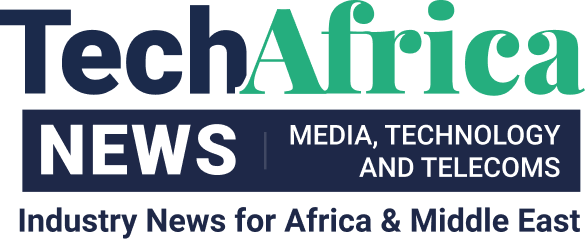Jaap Scholten the Head of Group Hybrid IT at Datacentrix writes about Data-driven healthcare and its benefits to for patients and better business outcomes.
Every major technological innovation in healthcare has brought with it rapid growth in medical knowledge, but also the growing generation of massive amounts of data. And while computers have become more affordable over time, and information systems geared specifically for the healthcare environment introduced, these technology gains have brought with them the usual traps of the information age: security, privacy, interoperability and standards, and storage requirements.
Harking back to the invention of the stethoscope and X-rays in the 1800s, the healthcare sector has seen a steady increase in technological innovation, accelerating through the 20th century to the arrival of the pacemaker, CAT scans and ultrasound in the 1960s.
It was here that the computerisation of electronic health record keeping (EHR) was considered for the first time. However, at that point, computers were expensive, complex and unreliable, and it was only during the following decade – the 1970s – which brought us MRI machines, that EHR gained greater acceptance. Electronic records stored in databases became more mainstream in the 1990s, albeit in tandem with a huge volume of paper-based documentation.
The future is here. The first robotic surgery took place in 1997, followed four years later by remote robotic surgery. And then in 2019, we saw the first remote robotic surgery over 5G. The following year, Google Cloud launched its healthcare interoperability readiness programme, alongside 5G-enabled Internet of Medical Things (IoMT) devices, nanomedicine, rapid drug development, and more.
Data-driven healthcare – or the smart analysis of de-identified healthcare data – is set to be worth $70bn by 2025, according to Bain & Company research.
Faster network speeds and the Internet have provided the kinetic energy to drive the advances in the medical sector. These include remote patient monitoring, Artificial Intelligence (AI), IoMT, and digital therapeutics (monitoring via wearables).
The concept of data-driven healthcare could be described as industry players generating and analysing data for improved patient care and better business outcomes. However, there are three technology pillars that must be considered in order for this to become a reality, namely data hosting, data transportation, and data security.
There’s no question that data needs to be hosted in the right place, but this in itself can become a complex process.
For instance, it is critical that a hospital’s heating, ventilation and air conditioning (HVAC) information is retained on-site, but the same institution’s financial information would probably need to be hosted at its head office, which would most likely be kilometres away from the medical facilities.
The medical staff, who want to analyse results, need tools to find trends within masses of unstructured data, so here it would make the most sense to host this information in the cloud where the tools exists to perform the analysis.
Fossil fuel cars require a lot of maintenance requirements, from spark plugs to gearboxes, oil changes and timing belts, brake pads and filters. However, electric cars do not require the same level of upkeep, as even the brake pads are hardly used due to regenerative braking, and software updates are received via the Internet.
Therefore, you could say that hybrid cars seem to be the worst choice possible – all the maintenance of a fossil fuel car, plus a small amount of the electric benefit. Yet, hybrid cars are an essential stepping stone to get to pure electrical vehicles, for reasons such as erratic electricity supplies, or continuously emerging battery technologies.
When it comes to technology, hybrid IT – or a combination of cloud and on-premises technology – provides the same stepping stone needed to get to a pure-cloud world (which is realistically still many years away).
Hybrid IT offers the benefits of affordable mass storage, through hyperscaler clouds such as Amazon Web Services or Microsoft Azure, as well as a place for huge amounts of unstructured data – so-called data lakes – to be analysed using Machine Learning (ML) tools to find patterns or trends in your data.
Networks always seem to have simple beginnings, yet sooner rather than later they become more complex than envisioned. Initially, networking was all about computer data, but quickly moved to voice and video, and it now incorporates IoT and of course IoMT devices as well. And each of these network services ultimately need to execute one goal: moving data between humans. There are numerous steps in between, from databases and web servers, to financial systems, operational systems, and of course the cloud.
The networks inevitably need to connect local systems inside a hospital as much as they need to link up hospitals to administrative offices. This means that where we have become used to using cables and data points, we now need Wi-Fi and 5G connectivity.
Thus, the network, in whichever form you use it, becomes the measure of your data experience. Your cloud experience is as good as your network connection to the cloud, and users’ experience is as good as the Wi-Fi, 5G, or LTE signal to which they are connected.
Gone are the days of a central firewall at the head office, or employing a network security specialist, who holds the keys to the front door. Data has moved out of the head office and off the hospital premises, out to the far corners of people’s homes, their notebooks and USB drives, to the cloud, and to the odd hotel where an executive overnights while travelling.
Data is on the move, and there is no stopping it. At the same time, many people want access to your data, be it IoMT data, financial data, or patient data, and therefore no strategy is complete without addressing data security.
Security now lives on your network, as well as in the cloud. It has become about identity management, where all correctly identified users may have access, based on their security profile and privileges.
The term used currently is SASE (Secure Access Service Edge), which means your network service indirectly reaches as far as people’s homes and overseas hotels. This is the edge of your network, and the only way that it can be secured is by giving users access by means of their identity. Practically, this means that network access to your services are based on Zero Trust – no access unless the users can correctly identify themselves.
I think it is poignant to note that Sherlock Holmes had already verbalised the importance of data back in 1900, saying that ‘It is a capital mistake to theorise before one has data’.
By accessing and understanding data in real-time, the healthcare sector will be able to improve user experience, increase revenue, decrease costs, and drive efficiencies. This is why a hybrid IT approach, one that begins with a data-first strategy and provides an ‘as a service’ experience, is so critical.
The right hybrid IT partner will be able to assist with a data-centric strategy that includes the fundamental pillars of the ideal data hosting environment, reliable data transport and connectivity, and far-reaching data security.











